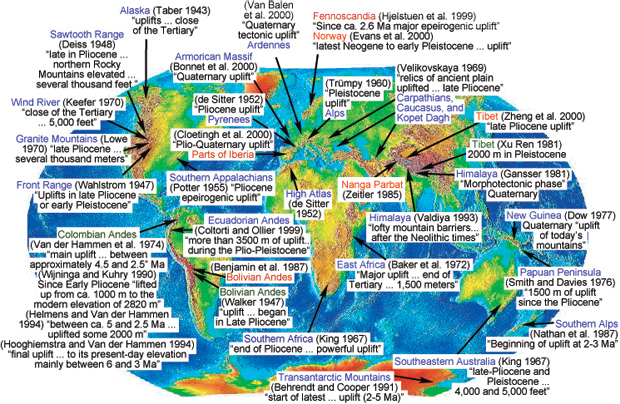 |

|
| Molnar Home | Research Projects | Publications |
| RESEARCH GROUPS @ CIRES > |
 |
Impact of Climate Change on Erosion and the Creation of ReliefFind me a mountain range, and I will find a credible, if not outstanding geologist who has claimed that that range rose to its present height largely in the past 2-4 Ma. 
Evidence for recent "uplift" of mountain ranges comes from a variety of sources, including simply the presence of juvenile landscapes, other evidence of rapid erosion or exhumation of currently exposed rock, rapid sedimentation in nearby basins, paleobotanical evidence for cooler warmer climates when fossil plant organs were deposited, etc. The only plausible explanation for the global distribution of elevated terrain that has allegedly risen in late Cenozoic time is that climate change has deceived us. This poses the question: How did climate change alter erosion rates? To attack this question, we seek an understanding of what processes govern erosion rates where they are rapid and hence create "juvenile landscapes" and an appreciation for how tectonic processes affect erosion. Because erosion seems to occur in rare large events, we have been studying the statistics of flooding. Because topography requires stress for its support, such stresses can in some circumstances cause fracturing, and because rivers and glaciers can transport fractured rock more easily than intact rock, we seek an understanding of the role of topography and fracturing. With little training, however, we grope in the dark a lot too. |